
Jane Wyman was an American actress. A star of both movies and television, she received an Academy Award for Best Actress (1948), four Golden Globe Awards and nominations for two Primetime Emmy Awards. In 1960 she received stars on the Hollywood Walk of Fame for both motion pictures and television. She was the first wife of President Ronald Reagan.
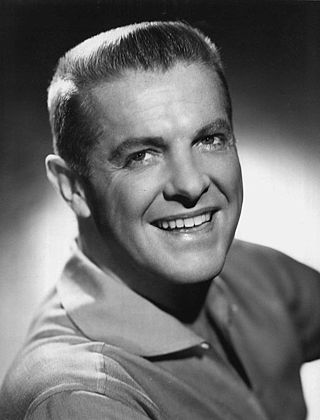
Charles Clarence Robert Orville Cummings was an American film and television actor who appeared in roles in comedy films such as The Devil and Miss Jones (1941) and Princess O'Rourke (1943), and in dramatic films, especially two of Alfred Hitchcock's thrillers, Saboteur (1942) and Dial M for Murder (1954). He received five Primetime Emmy Award nominations, and won the Primetime Emmy Award for Best Actor in a Single Performance in 1955. On February 8, 1960, he received two stars on the Hollywood Walk of Fame for his contributions to the motion picture and television industries, at 6816 Hollywood Boulevard and 1718 Vine Street. He used the stage name Robert Cummings from mid-1935 until the end of 1954 and was credited as Bob Cummings from 1955 until his death.

Wendell Reid Corey was an American stage, film, and television actor. He was President of the Academy of Motion Picture Arts and Sciences and a board member of the Screen Actors Guild, and also served on the Santa Monica City Council.
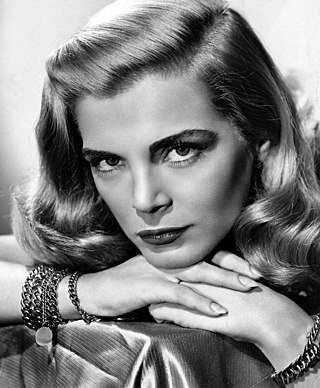
Lizabeth Virginia Scott was an American actress, singer and model for the Walter Thornton Model Agency, known for her "smoky voice" and being "the most beautiful face of film noir during the 1940s and 1950s". After understudying the role of Sabina in the original Broadway and Boston stage productions of The Skin of Our Teeth, she emerged in such films as The Strange Love of Martha Ivers (1946), Dead Reckoning (1947), Desert Fury (1947), and Too Late for Tears (1949). Of her 22 films, she was the leading lady in all but three. In addition to stage and radio, she appeared on television from the late 1940s to early 1970s.

The Strange Love of Martha Ivers is a 1946 American noir tragedy film directed by Lewis Milestone and starring Barbara Stanwyck, Van Heflin and Lizabeth Scott. Kirk Douglas appears in his film debut. It follows a man who is reunited with his childhood friend and her husband; both the childhood friend and her husband believe that the man knows the truth about the mysterious death of the woman's wealthy aunt years prior. The screenplay was written by Robert Rossen, adapted from the short story "Love Lies Bleeding" by playwright John Patrick.
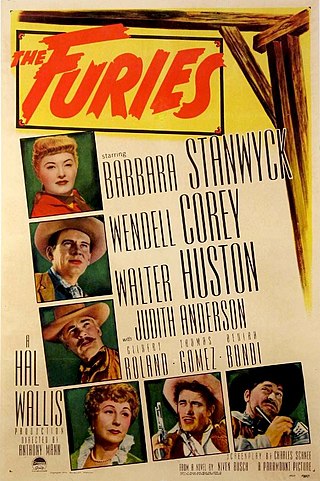
The Furies is a 1950 American Western film directed by Anthony Mann and starring Barbara Stanwyck, Wendell Corey and Walter Huston in his final film performance. Based on the 1948 Niven Busch novel of the same name, its plot follows the ruthless daughter of a tyrannical rancher in 1870s New Mexico Territory who struggles with her stake in his estate.
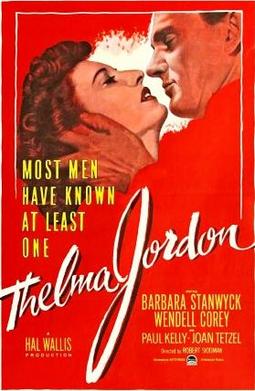
The File on Thelma Jordon is a 1950 American film noir drama film directed by Robert Siodmak and starring Barbara Stanwyck and Wendell Corey. The screenplay by Ketti Frings, based on an unpublished short story by Marty Holland, concerns a woman who pretends to fall in love with an assistant district attorney and uses him to escape conviction for the murder of her wealthy aunt.

Corinne Calvet, born Corinne Dibos, was a French actress who appeared mostly in American films. According to one obituary, she was promoted "as a combination of Dietrich and Rita Hayworth", but her persona failed to live up to this description, though the fault lay as much with a string of mediocre films as with a lack of a compelling talent, for Calvet's sultry looks and flashing eyes were allied with an impish sense of humor. She eventually became better known for her fiery private life and some well-publicized legal battles.

The Bride Wore Boots is a 1946 American romantic comedy film with Barbara Stanwyck in the title role, playing opposite Robert Cummings. A very young Natalie Wood is seen in the film, directed by Irving Pichel.
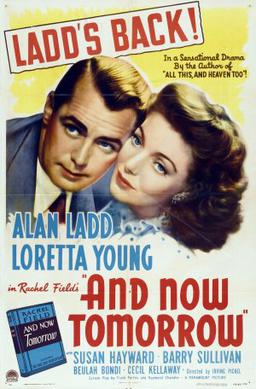
And Now Tomorrow is a 1944 American drama film based on the best-selling novel, published in 1942 by Rachel Field, directed by Irving Pichel and written by Raymond Chandler. Both center around one doctor's attempt for curing deafness. The film stars Alan Ladd, Loretta Young, and Susan Hayward. Its tagline was Who are you that a man can't make love to you?. It is also known as Prisoners of Hope.

The Shrike is a 1955 American film noir drama film based on Joseph Kramm's play of the same name. José Ferrer directed and starred in Ketti Frings' screenplay adaptation.
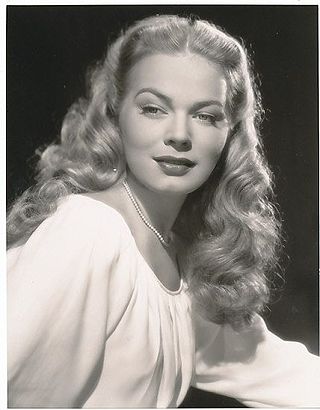
Kristine Miller was an American film actress. She appeared in film noir and Westerns. A discovery of Paramount producer Hal Wallis, she appeared in I Walk Alone (1948), Jungle Patrol (1948), Too Late for Tears (1949), Shadow on the Wall (1950), and the TV series Stories of the Century (1954–55).

Cry Wolf is a 1947 American mystery film noir directed by Peter Godfrey and starring Errol Flynn, Barbara Stanwyck and Geraldine Brooks. It was produced and distributed by Warner Bros. It is based on the 1945 novel of the same name by Marjorie Carleton.

Joe MacBeth is a 1955 British–American crime drama, directed by Ken Hughes and starring Paul Douglas, Ruth Roman and Bonar Colleano. It is a modern retelling of Shakespeare's Macbeth, set in a 1930s American criminal underworld. The film's plot closely follows that of Shakespeare's original play. It has been called "the first really stand out movie" of Hughes' career.
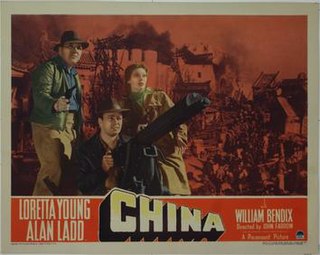
China is a 1943 film directed by John Farrow and starring Loretta Young, Alan Ladd and William Bendix. Ladd's character David Llewellyn Jones, wearing a fedora, a leather jacket, khakis and a beard stubble, was an inspiration for Indiana Jones. Aside from Tala Birell as one of Jones' paramours at the beginning of the film, the entire supporting cast is Asian, including Philip Ahn and Richard Loo.

Because of You is a 1952 American drama romance film noir directed by Joseph Pevney and starred Loretta Young and Jeff Chandler. This film was surprising in that it showed a provocative "sexy side" of Miss Young, quite different from her usual dignified brunette "nice girl" part.

Red Mountain is a 1951 American Western film directed by William Dieterle and starring Alan Ladd, Lizabeth Scott, Arthur Kennedy and John Ireland, set in the last days of the US Civil War. The plot centres on an attempt by Quantrill's Raiders to stir up rebellion in the West.

Paid in Full is a 1950 American drama film directed by William Dieterle and written by Robert Blees and Charles Schnee. The film stars Robert Cummings, Lizabeth Scott, Diana Lynn, Eve Arden, Ray Collins and Frank McHugh. The film was released on February 15, 1950 by Paramount Pictures.

The Perfect Marriage is a 1947 American comedy film directed by Lewis Allen and written by Leonard Spigelgass. The film stars Loretta Young, David Niven, Eddie Albert, Charlie Ruggles, Virginia Field, and Rita Johnson. The film was released on February 24, 1947, by Paramount Pictures.
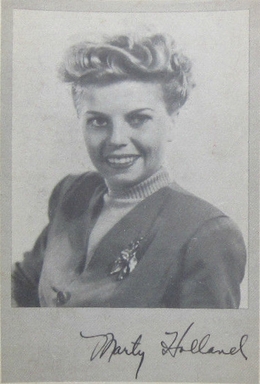
Marty Holland was an American screenwriter and author of pulp novels.



















